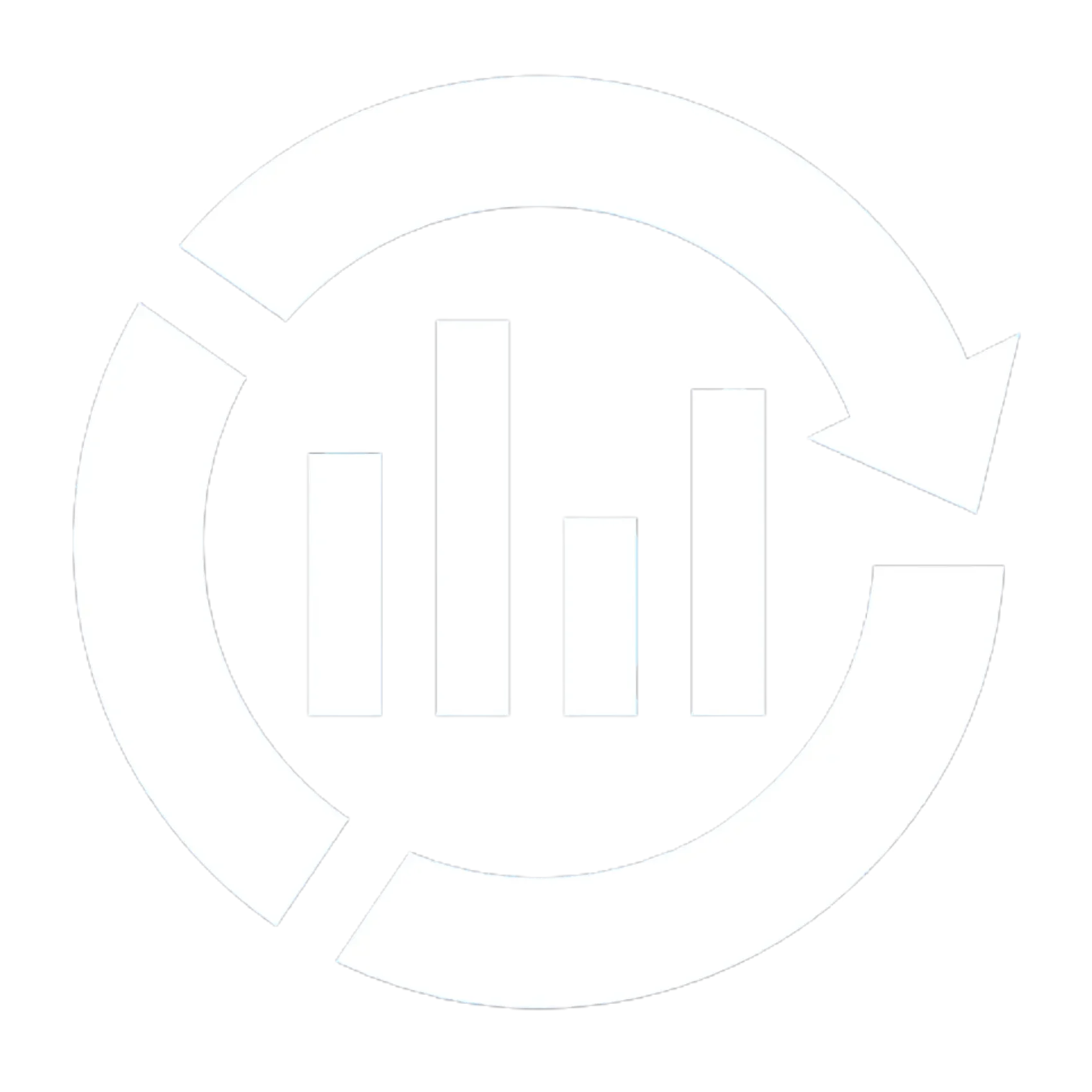If you’ve ever wondered how much inventory you should keep on hand without overstocking, our Cycle Stock Calculator can give you the answer in seconds.
Cycle stock is the portion of your inventory that you regularly use or sell to meet predictable customer demand during a replenishment cycle. Think of it as your “working stock” — the items that keep moving in and out of your warehouse as part of day-to-day operations.
Getting your cycle stock right is crucial for inventory and supply chain management. Too little stock can lead to shortages and lost sales, while too much stock ties up capital and increases holding costs.

In this guide, we’ll explain what cycle stock is, why it matters, how to calculate it using both formulas and our free tool, and how to optimize it for better efficiency and profitability.
What is Cycle Stock?
Cycle stock is the portion of your inventory that is used to fulfill regular, predictable customer demand during a given replenishment cycle. It’s the stock that flows in and out of your warehouse as part of normal operations — not the extra inventory you keep for emergencies or sudden demand spikes.
In simple terms, cycle stock is:
Total Inventory – Safety Stock = Cycle Stock
Where:
- Safety stock is the buffer you hold for uncertainties like supplier delays or sudden demand surges.
- Cycle stock is the “working inventory” you expect to sell or use before your next replenishment.
Example
If your average inventory is 1,000 units and your safety stock is 300 units, your cycle stock would be:
1,000 – 300 = 700 units
These 700 units represent the items that will turn over regularly and keep your operations running smoothly until your next order arrives.
Understanding this distinction is important because optimizing cycle stock helps you:
- Reduce holding costs
- Improve cash flow
- Maintain a steady supply without overstocking
In the next section, we’ll see why getting your cycle stock right is critical for supply chain success.
Why Cycle Stock Matters in Supply Chain Management
Getting your cycle stock right isn’t just a numbers exercise — it’s a core part of running a lean, cost-effective supply chain.
When cycle stock is accurately calculated and maintained, several benefits follow. First, customer orders are fulfilled on time because you have enough inventory to cover regular demand. Second, capital is freed up for other parts of your business instead of being tied up in excess stock. Furthermore, storage and handling costs go down since you’re not overstocking slow-moving items. As a result, supply chain efficiency improves as replenishment orders are planned based on actual demand patterns.
On the other hand, poor cycle stock management can create serious problems. For example, stockouts can force you to delay or cancel customer orders. In addition, overstocking not only increases carrying costs but also raises the risk of obsolescence. Moreover, excessive inventory can cause cash flow issues, as too much money sits in unsold stock.
In short, cycle stock acts as the balance point between service levels and operational efficiency — helping you meet customer demand while controlling costs.
How to Calculate Cycle Stock
There are two common methods for calculating cycle stock, depending on the data you have.
Formula 1 – Using Average Inventory and Safety Stock
Cycle Stock=Average Inventory−Safety Stock\text{Cycle Stock} = \text{Average Inventory} – \text{Safety Stock}Cycle Stock=Average Inventory−Safety Stock
- Average Inventory: The average number of units you hold over a set period.
- Safety Stock: The buffer you keep for unexpected demand spikes or supplier delays.
Example:
- Average Inventory = 1,200 units
- Safety Stock = 400 units
- Cycle Stock = 1,200 − 400 = 800 units
Formula 2 – Using Economic Order Quantity (EOQ)
If you already know your EOQ, you can calculate cycle stock as: Cycle Stock=Order Quantity2\text{Cycle Stock} = \frac{\text{Order Quantity}}{2}Cycle Stock=2Order Quantity
This formula works because inventory naturally decreases from the full order quantity down to zero before the next replenishment — meaning your average on-hand stock is half of the order size.
Example:
- EOQ = 1,000 units
- Cycle Stock = 1,000 ÷ 2 = 500 units
Instant Calculation with Our Free Tool
Manually calculating cycle stock works, but it can be time-consuming. Our free Cycle Stock Calculator makes it easy by:
- Working with either formula
- Providing instant, accurate results
- Showing reorder points, days of cover, and risk analysis
- Helping you avoid stockouts and reduce excess inventory
Simply enter your demand, lead time, safety stock, and unit cost to get a full breakdown with clear interpretations in seconds.
Cycle Stock vs. Safety Stock
Although they both refer to inventory you keep on hand, cycle stock and safety stock serve very different purposes. Understanding the difference is essential for accurate inventory planning.
| Aspect | Cycle Stock | Safety Stock |
|---|---|---|
| Purpose | Fulfills regular, predictable demand during a replenishment cycle | Acts as a buffer against demand spikes or supply delays |
| Usage Pattern | Depleted and replenished on a routine basis | Only used when actual demand exceeds forecasts or supply is delayed |
| Calculation Method | Average Inventory – Safety Stock, or EOQ ÷ 2 | Based on service level targets, demand variability, and lead time |
| Impact on Operations | Supports daily sales and keeps supply chain running smoothly | Reduces risk of stockouts and lost sales |
| Risk if Mismanaged | Overstocking increases holding costs; understocking leads to stockouts | Too little = higher risk of shortages; too much = tied-up capital |
Key Takeaway
- Cycle stock = Your working inventory for normal demand.
- Safety stock = Your emergency backup for the unexpected.
Both are crucial for a healthy supply chain, but they should be calculated and managed separately to avoid overstocking or shortages.
In the next section, we’ll explore how to optimize cycle stock so you can reduce costs without sacrificing service levels.
How to Use Our Cycle Stock Calculator
Our Cycle Stock Calculator is designed to give you quick, accurate inventory insights without the hassle of manual formulas. Here’s how to get the most out of it:
Step 1 – Enter Your Average Demand
- Input the average number of units you sell (or use) per day.
- If you have seasonal variations, use the most relevant period for your calculation.
Step 2 – Enter Your Lead Time
- This is the time (in days) it takes for a replenishment order to arrive from your supplier.
- If your suppliers have variable lead times, use the worst-case scenario to stay safe.
Step 3 – Add Your Safety Stock
- Enter the buffer quantity you keep for demand spikes or supplier delays.
- If you’re unsure, you can calculate it separately or start with a conservative estimate.
Step 4 – (Optional) Add Unit Cost
- If you enter your per-unit cost, the calculator will also show the total value of your cycle stock.
- This helps you understand the financial impact of your inventory decisions.
Step 5 – Click ‘Calculate’
- Instantly see your Cycle Stock, Reorder Point, Days of Cover, and Risk Assessment.
- The tool highlights if your days of cover are significantly above or below your lead time — so you know if you’re overstocked or at risk of a stockout.
How to Optimize Cycle Stock
Managing cycle stock isn’t just about calculating it once — it’s about continuously adjusting it to match demand, lead time, and market conditions. Here’s how to optimize it for lower costs and higher efficiency:
1. Align Inventory with Demand Patterns
- Use historical sales data to identify seasonal trends and demand spikes.
- Adjust your cycle stock ahead of peak periods to avoid last-minute rush orders.
2. Review Lead Times Regularly
- Keep track of supplier performance.
- If lead times increase, your cycle stock may need to be higher to maintain service levels.
3. Integrate with Safety Stock Planning
- Treat cycle stock and safety stock as separate calculations.
- Balance both to maintain high service levels without overstocking.
4. Leverage Technology for Accuracy
- Use inventory management software or our Cycle Stock Calculator to run quick, accurate calculations.
- Automate alerts for when stock levels fall below reorder points.
5. Monitor KPIs Continuously
- Track key metrics like inventory turnover, stockouts, and carrying costs.
- Adjust your cycle stock if KPIs indicate inefficiencies.
Pro Tip:
If your days of cover are significantly higher than your lead time, you’re likely tying up too much capital in stock. Our calculator highlights this risk by directly comparing both figures, so you know exactly where you stand.






